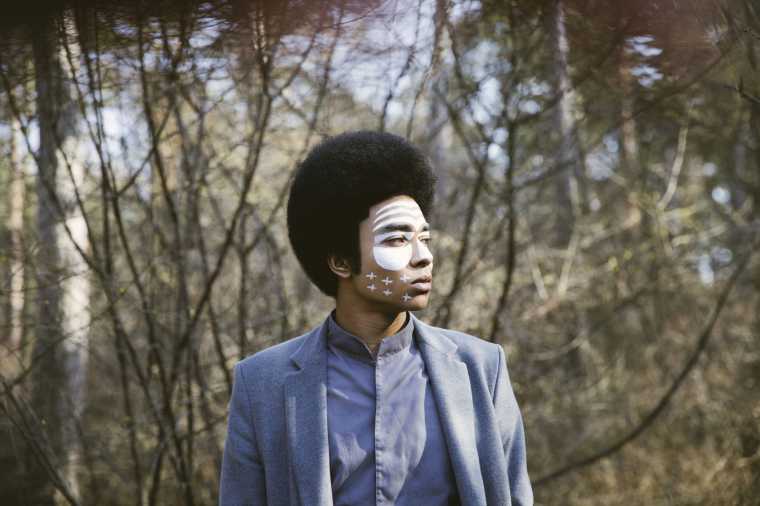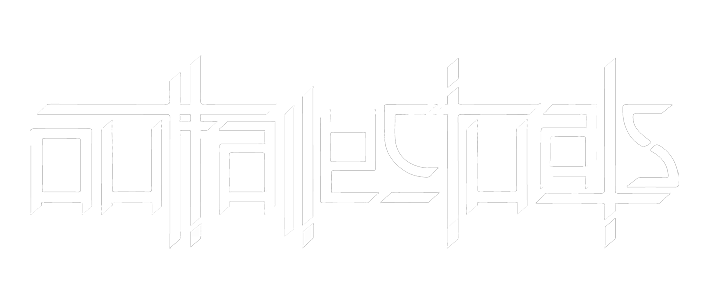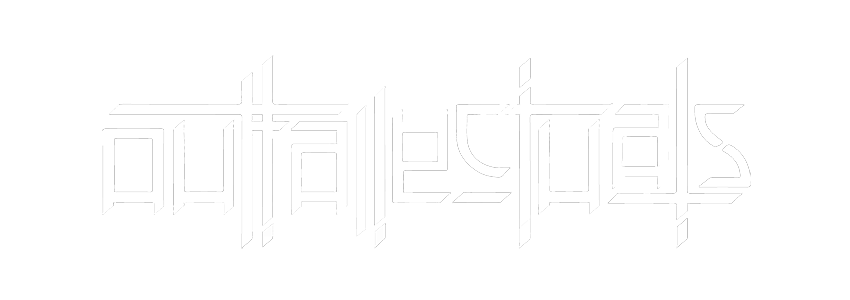
A casual conversation between the extraordinary producer known as Kimyan Law, and Outtallectuals writer, Molly Sisson; carried out during the Coronavirus lockdown about the artist’s unique musical character & masked aesthetic. We’ve long been fans of Kimyan Law’s music which always tiptoes within the liminal states between liquid drum n bass, experimental music and an almost cross-cultural neo-folk attitude.
Q. Hi Kimyan Law, thank you for accepting to do this interview. Really excited to read your answers and get to know you and your music in a more personal manner.
A. Thank You for having me.
Q. What is your history and relationship with music? What artists / instruments / genres pushed you to make music yourself?
Making music’s always been a part of my life, an essential and very important one. I started making music at a very young age and learned to play a few instruments growing up. Mostly different drums, percussion and Mbira/Kalimba. I don’t recall any specific artists, but genre-wise I’d say broadly African and Asian traditional music always surrounded me. The environment I grew up in was a very natural one, with lots of forests, rivers and lakes, so the sounds of these surroundings and their animal inhabitants seem to have stuck with me.
Q. What is your relationship with playing live music vs making it in the studio?
I love both, so it’s a mixture with me, really. Since I just use a laptop and earplugs, I’m never really in a studio. That sort of allows me to create music on the spot, wherever I might be. Carrying a field recorder further allows me to play patterns and rhythms and record them directly, so there’s always a sort of instant or live-approach or element to it.
Q. I read you use field recorders to find a variety of samples and sounds for producing your music. What catches your eye or rather ear when searching for sounds?
Yes, true. It depends on what I’m currently working on, but I’ve got a couple of favourite textures or animal phonetics that I just love to incorporate. Lots of clicking sounds, wood percussion, or natural water textures for example.
Q. What instruments do you play and how do they impact your own music-making?
Mostly percussive ones I’d say, like Djembe, Drums + Cahon, but also Mbira/Kalimba, Flute and just enough Piano to play a few melodies. The good thing with knowing a handful of them is that I’m able to quickly add a phrase onto a composition I’m working on, without having to think too much about the instrument itself. it allows one to be more intuitive, which is key to making music for me.
Q. What is your opinion on mixing traditional instruments with technology?
I guess I’m for it? Electronic music and its technology + instruments have expanded the ‘traditional’ instrumentation and approach to making music, you can see, and of course hear, that more traditional instruments are still being used, played, sampled, or even imitated. I feel like it’s just an update, an extension, which is great because it just gives you more ways to be creative with making music.
Q. I read you are from the Luba Tribe in the Congo, do you use music to delve into your roots?
True, from the Democratic Republic of the Congo.
I try to incorporate my roots in most of my music + artwork, yes.
Q. I am a big fan of your iconic face paint. Does this play a role with your own identity and as an artist?
Yes, the paint on my face resembles and stems from a particular mask of my ancestors. Wearing it shows where i stem from and how my roots live on through me.
Q. Referring to your tracks as “pieces”, is creating music like giving life / creating a character? As your hobbies go further than just music production; from painting to graphic design, do you see similar themes and aesthetics crop up through these different arts?
I don’t know what giving life is like [laughs] but I refer to them like that because I often work on a ’piece’ based off of an emotion, a scent, the weather, a dream, it depends. And because I’m adding bits here, and subtracting bits there, it often feels like I’m working on a ‘piece’ the way you’d work on carving a piece of wood, until you’re happy with its outcome. My paintings and visuals are also definitely linked to my music, through the same themes, yes.
Q. Has the quietness of lockdown had an effect on your music productivity, have you any future projects?
To be honest, not as much as I’d anticipated [laughs] When making music, I often have to retreat a bit anyway, in order to focus on the ‘pieces’. So in that sense, I didn’t notice it as much as maybe someone who’s constantly working in public. To answer the second part of the question: Yes, there are future projects, and yes there’s going to be new music. Soon 🙂
Q. Are there any future collaborations in the works?
[laughs] That’s a good question. 🙂
Thanks for having me, Bless.
While we anticipate new music from the artist, you can check out his exemplary recent album, “Yonda”, which came out in 2019 and will easily sound fresh for another 10 years.
Check out and support Kimyan Law on his website, Facebook, Spotify & Instagram.
Written by Molly Sisson.
OUTTA Top Discoveries of 2021
A lot of good music came through our doors in 2021, be it through the curation work we do via Shivelight, the playlist submissions we receive on Submithub, or generally through our network’s discovery reach. This year, we don’t have the capacity to do a full genre-by-genre breakdown like last [...]| Play | Cover | Release Label |
Track Title Track Authors |
|---|

